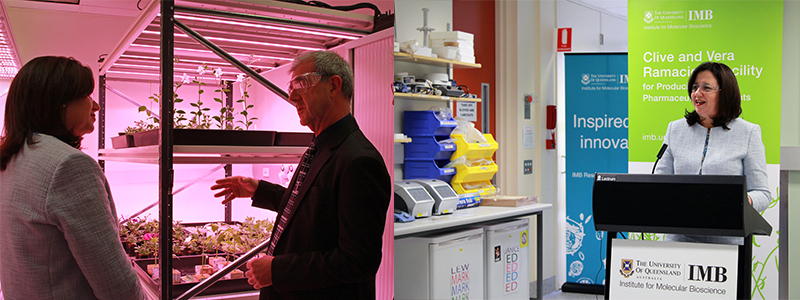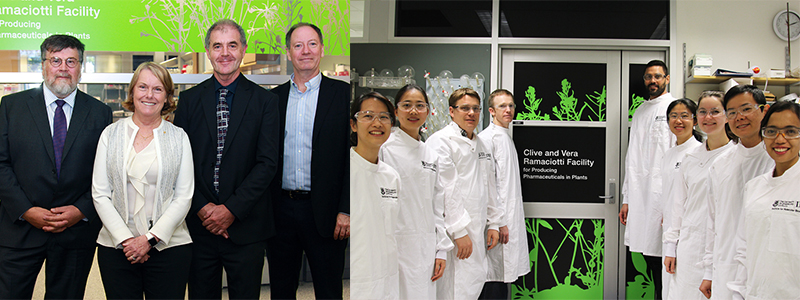The future of medicine could be as simple as nibbling a sunflower seed or drinking a cup of tea, with the opening of a new facility at The University of Queensland on 18 October.
The Clive and Vera Ramaciotti Facility for Producing Pharmaceuticals in Plants at UQ’s Institute for Molecular Bioscience has the potential to provide inexpensive medications to patients, which will have a significant impact locally and internationally.
The facility was officially launched today by the Hon Annastacia Palaszczuk, Queensland Premier and Minister for the Arts.
Head of the new state-of-the-art laboratory, Professor David Craik, said his team would use the Ramaciotti Facility to transform plants into ‘biofactories’ that produced potent next-generation pharmaceuticals.
“The new drugs will be incorporated into novel plant products such as seeds, medicinal teas and foods, where they have the potential to dramatically improve the lives of patients who cannot afford current medications, or cannot tolerate the effects of their complicated treatment regimes,” he said.
"Certain plants naturally produce molecules called cyclic peptides, which we will redesign for pharmaceutical purposes.
“We will then use other host plants, including canola, tobacco and petunia, as manufacturing facilities to produce the ‘designer’ peptide medicines.”
Professor Craik said he believed third world countries in particular could benefit from drugs grown cheaply in plants, instead of synthesised in laboratories.
“Our work could have huge impacts in the third world, where many regions are devastated by diseases such as HIV/AIDS because although effective drugs exist, they're just too expensive,” Professor Craik said.
"Our research indicates that the future of drugs lays in peptides, as they are more selective, more potent and potentially safer because when they eventually break down they turn into amino acids, which are basically food.
“This work – which we hope will be approved for widespread use by 2025 – could have serious positive impacts on patients suffering cancer, cardiovascular disease, multiple sclerosis and pain.”
The facility was made possible through a generous $1 million Ramaciotti Biomedical Research Award from the Clive and Vera Ramaciotti Foundations and trustee Perpetual, which is shared with Professor Craik’s collaborator, Professor Marilyn Anderson AO from La Trobe University.
UQ Vice-Chancellor and President Professor Peter Høj said such donations allowed the university to continue its longstanding tradition of creating change in people’s lives across the globe, including in developing countries where access to traditional drugs can be challenging.
“An added benefit from UQ’s research excellence is that the medical community of tomorrow can engage with breakthrough technologies as part of their university education and be inspired to always try to innovate for the benefit of their patients,” Professor Høj said.
Media: Kate Sullivan, IMB Communications, k.sullivan4@uq.edu.au, 07 3346 2155, 0421 819 807; Perpetual, Jarrah Aguera, jarrah@honner.com.au, 02 8248 3745.


Top left: The Hon Annastacia Palaszczuk with Prof David Craik explore the facility; Top right: The Hon Annastacia Palaszczuk officially launches the facility; Bottom left: Ramaciotti Foundation Scientific Advisory Board member Prof Simon Foote, La Trobe University collaborator Prof Marilyn Anderson AO, facility head Prof David Craik, and IMB Director Prof Brandon Wainwright; Bottom right: Craik lab members outside the facility.



